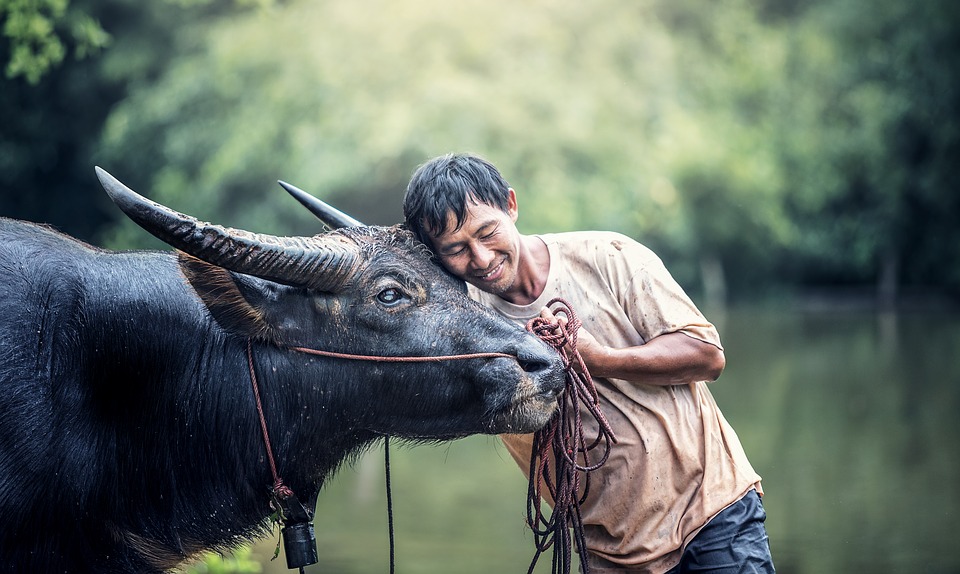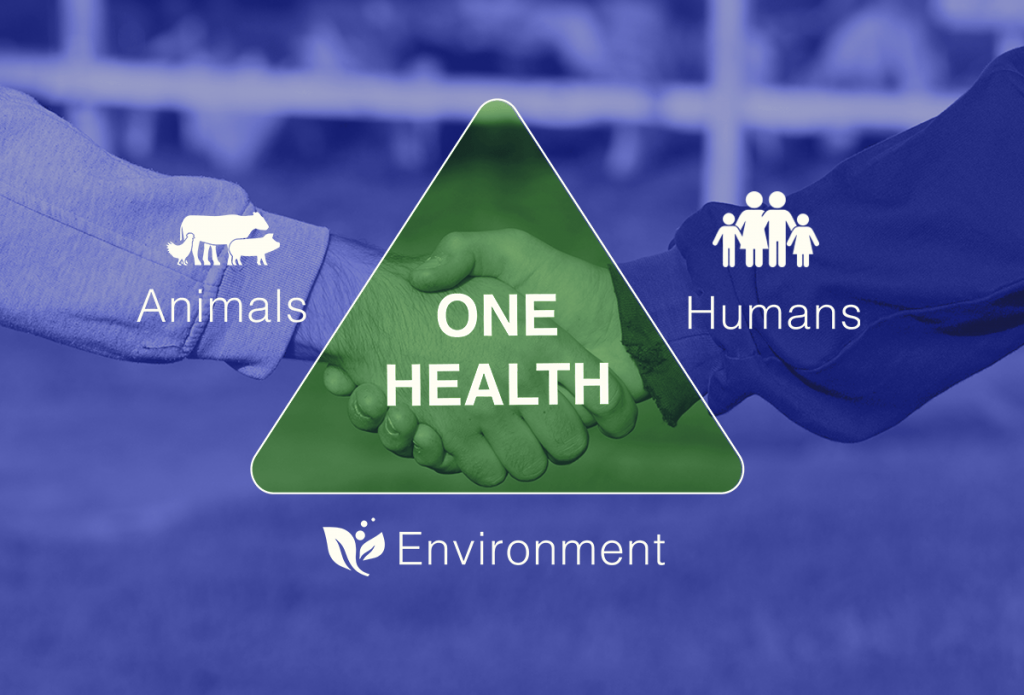One Health: An Approach for People, Animals and the Planet
 Experts increasingly recognize the interconnectivity between the health of people, animals and the planet. Protection of human health requires attention to animal and environmental health. Stated another way, protection of animal health contributes to the health of people and the planet.
Experts increasingly recognize the interconnectivity between the health of people, animals and the planet. Protection of human health requires attention to animal and environmental health. Stated another way, protection of animal health contributes to the health of people and the planet.
An international effort known as the One Health Initiative acknowledges and explores the links between animal health, human health and our environment. This important work is helping increase understanding and improve outcomes on all three fronts.
One Health is not a new concept, but it has become more important in this time of unprecedented change with population growth, food availability, safety and affordability, and human and animal health among a long list of growing global concerns.
 The Human Health and Animal Health Connection
The Human Health and Animal Health Connection
As global population continues to increase, the connection between human and animal health becomes even more significant.
Certainly, most of us are connected through our diets as meat, milk and eggs are important sources of protein and overall nutrition for families around the world. The need is greater than ever with the global population expected to reach over 9 billion by 2050.
In developing regions, a single animal can provide food for a family, but also manure for their plants and labor to help till the field. It can provide an income that allows them to buy more fruits and vegetables for improved nutrition. They can afford better healthcare and education, contribute to savings for the future and spend money in their communities to help economies flourish.
With one in six people worldwide employed in livestock production, there’s a lot riding on animal health.
Zoonotic Diseases
Unfortunately, humans and animals are also connected through the spread of disease, something a One Health approach can be important in addressing.
More than two million people die each year from diseases that spread from animals to people, a startling number.
According to the Centers for Disease Control (CDC), more than half of all diseases in the world are what we call zoonotic, which simply means they can spread from animals to people or vice versa. In addition to two million human deaths each year, more than two billion people become ill from these diseases.
Sobering statistics like these illuminate the importance of preventing diseases in animals. Those of us with animals in our care – whether companion animals or animals raised for food – protect their health because it’s the right thing to do. But it’s also the smart thing to do to keep people healthy.
Zoonotic diseases range from Lyme disease and West Nile virus to Ebola and rabies. While simple hand washing, mosquito prevention and cooking techniques can limit exposure, the most effective method is preventing an animal from contracting the disease altogether.
Disease monitoring and management are key. The U.S. animal health sector takes a leading role in monitoring emerging diseases, working with global animal health organizations to keep an eye on diseases that are spreading and the locations impacted.
This is critical for the 70% of the world’s extreme poor who depend on livestock for their livelihood and the countless people who have welcomed a pet into their lives. Five new emerging diseases appear each year; three or four of these will be zoonotic. Most of these will originate in wildlife. That’s why improving wildlife monitoring can better protect people and animals against these diseases.
Antibiotic Stewardship
The One Health approach is helping society monitor and share information about antibiotic resistance too. Antibiotic resistance occurs when bacteria become resistant to the effects of medicine or other remedies. This means that the drug or remedy, and possibly similar remedies, will no longer be effective against those bacteria. The One Health Initiative also promotes antibiotic stewardship, recognizing that the responsible use of antibiotics by doctors and patients, as well as by veterinarians and farmers, helps reduce the risk of antibiotic resistance.
Examining the responsible use of animal antibiotics through a One Health lens reveals how it helps to protect human health and conserve natural resources. Studies show that keeping animals healthy reduces the risk of bacteria entering the food supply. Safer food means healthier people. Responsible use can also reduce the environmental impact of animal agriculture. If farm animals become sick and die, more animals are needed, which requires more feed and that means more grain must be planted, fertilized and watered.
Allowing farmers and veterinarians to prevent disease, or treat sick animals when necessary, contributes to food safety and helps conserve natural resources, which is good for people and our planet.
A Collaboration Case Study
Rift Valley Fever (RVF) was a big problem in East Africa. In 1997, it killed 500 and sickened another 90,000 people. Many animals such as cattle, sheep and goats also died, causing economic hardship for people who relied on them for food and as a trading commodity. People were infected through mosquitos or contact with infected animals and the worst outbreaks occurred in years of unusually heavy rain, providing an ideal environment for mosquito growth.
Here’s how a multi-disciplinary approach arrived at a solution.
Researchers discovered that heavy rains were caused by changes in ocean temperature, which affect weather patterns. NASA used satellite images to monitor and predict when RVF outbreaks were likely.
But how do you break the chain of disease transmission?
Vaccinating people wasn’t an option because there is no approved human RVF vaccine. Killing mosquitoes with pesticides wasn’t a good option because it’s time-consuming and potentially exposes people to other health risks. Vaccinating animals was the answer. By preventing RVF in animals, fewer humans would be infected from mosquitoes or from direct contact with sick animals. Vaccinations also protect the animals that the people rely on for food and as a source of income.
This is just one example of how effective collaboration by different fields can help public health professionals prevent disease outbreaks in animals and better protect the health of people. In the U.S., the Centers for Disease Control (CDC) uses the One Health approach by working with physicians, veterinarians, ecologists, and many others to monitor and control public health threats and to learn about how diseases spread among people, animals and the environment.
Protecting Animal Health
When we protect animal health, the need for further treatments decreases. When an animal is vaccinated or has better nutrition, its immune system can naturally resist a bacterial infection. In addition, an immune system that is activated because of disease causes more energy to be diverted to fight off the disease that should have been used to grow in an efficient manner. The addition of nutritional specialty products to animal food can help improve gut health. These animals will not be as likely to need an antibiotic, which helps preserve antibiotic effectiveness.
Through One Health, we’re on the right path to tackle some of the world’s most pressing challenges. But success can only be achieved through the collaboration of a global network of experts and organizations devoted to keeping animals healthy. It’s the key to protecting human health and our earth’s natural resources.